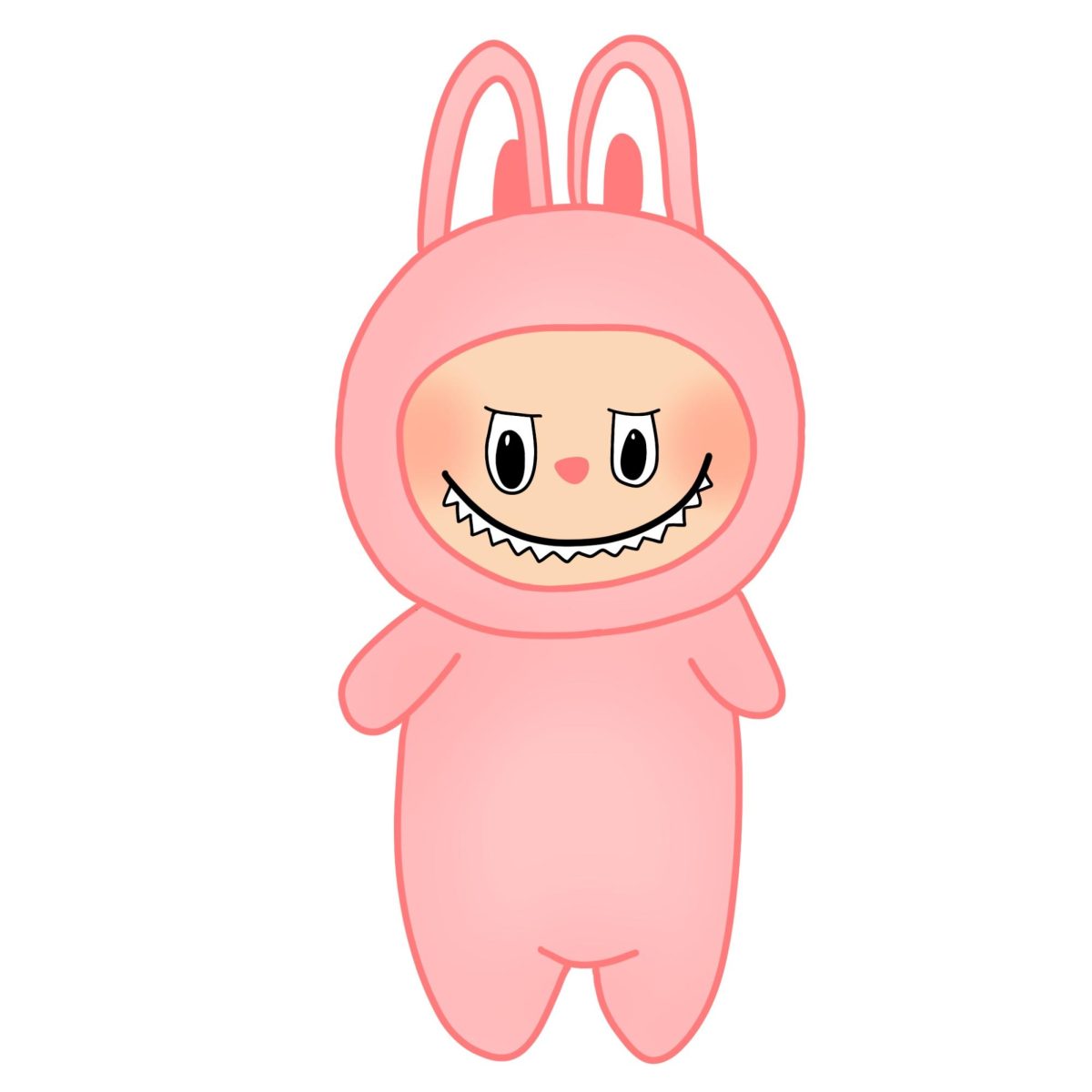This past summer was invaded by adorable fuzzy monsters with sharp teeth, known as Labubus. These creepy dolls have become so exclusive that it is rare to find them in any ordinary store. While some people share a deep hatred toward them, others have become so drawn in by the craze that they have devoted their lives to collecting them. So, what exactly are Labubus, and how did they become a global craze?
According to National Public Radio (NPR), the grinning, fuzzy toy was created by the popular Chinese company Pop Mart. Although these collectible dolls have been in demand in Asia since 2014, they began to gain traction in the United States in 2024 and 2025 after photos of celebrities such as Rihanna and Kim Kardashian with Labubu toys were shared online. These dolls not only became a fashion accessory but a collectable, rapidly garnering media attention (npr.org).
While some people will simply buy one Labubu to use as a key chain or accessory, others buy whole sets. The most popular of these dolls are sold in blind boxes, meaning the figure inside is a mystery until opened. The appeal of unboxing and revealing a secret, rare doll only adds to the massive appeal. Consumers have found that buying whole sets limits the chances of getting two of the same kind while maximizing the possibility of collecting the “mystery” doll.
While the chase for exclusive dolls may seem thrilling at first, the cost can quickly shift a person’s perspective. According to Forbes, consumers will spend anywhere from 30 dollars up to hundreds, and even thousands of dollars due to skyrocketing resale prices. What begins as a harmless hobby can spiral into a costly obsession, especially as limited-edition releases fuel a sense of urgency and competition. For many fans, the emotional high of unboxing rare figures can override rational spending habits (forbes.com).
Just like any other addiction, collecting Labubu dolls can trigger dopamine hits from opening the blind boxes. According to The Guardian, “Pop Mart’s blind‑box model taps into gambling-like mechanisms — through unpredictability, scarcity marketing, and emotional triggers — to encourage repeated purchases.” Opening a toy mystery box can act as a psychological equivalent to gambling, inducing compulsive buying behaviors and creating an addictive loop (theguardian.com).
FOMO (fear of missing out) is a major factor fueling the Labubu craze. A study in the European Journal of Business and Management Research found that FOMO significantly drives impulsive buying behavior among young consumers, particularly during limited-time product drops. This is especially relevant to Labubu collectors, as new collections featuring rare or “secret” dolls are released frequently, creating a sense of urgency and emotional pressure to buy before it’s too late (ejbmr.org).
As social media slowly takes over every aspect of our lives, it is no surprise that it is a major contributor to compulsive buying behaviors. As consumers constantly scroll on social media, watching massive hauls, the desire to impulsively buy increases. Additionally, users with FOMO are more susceptible to influencer culture, often making purchases to emulate the lifestyles portrayed, further reinforcing pressure to follow trends, in this case massive Labubu collections (ejbmr.org).
These behaviors can be tied back to the Beanie Baby phenomenon back in the late 1990s. This fad is significantly similar to the Labubu craze as collectors invested thousands of dollars into the little plush toys, which some might say were cuter than the fuzzy, smiley monsters we see now. Much like Labubus, the Beanie Baby trend was fueled by the limited availability of certain Beanie Babies, the emotional connection collectors formed with the toys, and the rapid growth of online marketplaces. Today, Beanie Babies can be purchased for as low as five dollars and have little significant meaning (or value) to consumers (nytimes.com).
We have seen this type of consumer frenzy before. So where is the addiction headed next? Will consumers continue pouring their money into every new release, or will the craze fade as another trendy toy takes its place? Whether it’s collecting toys or gambling, addiction in any form can have serious consequences, both financially and emotionally. As the line between playful hobby and harmful compulsion blurs, it’s worth asking, how far is too far?

